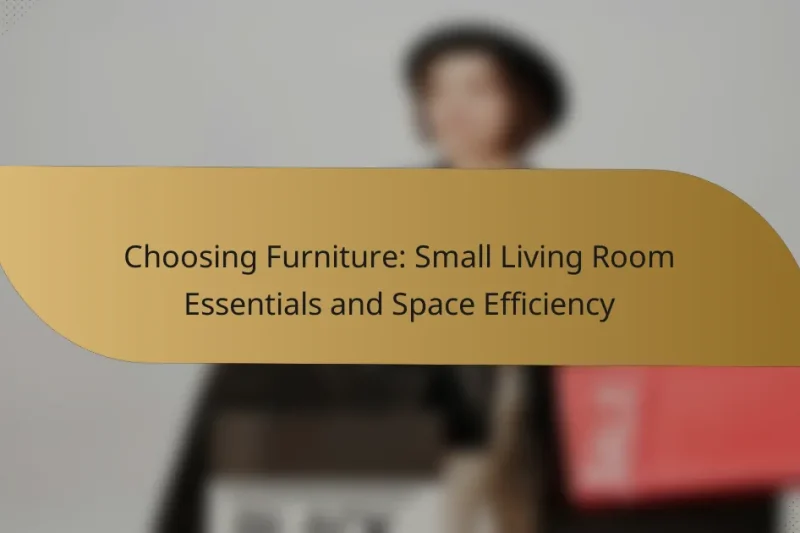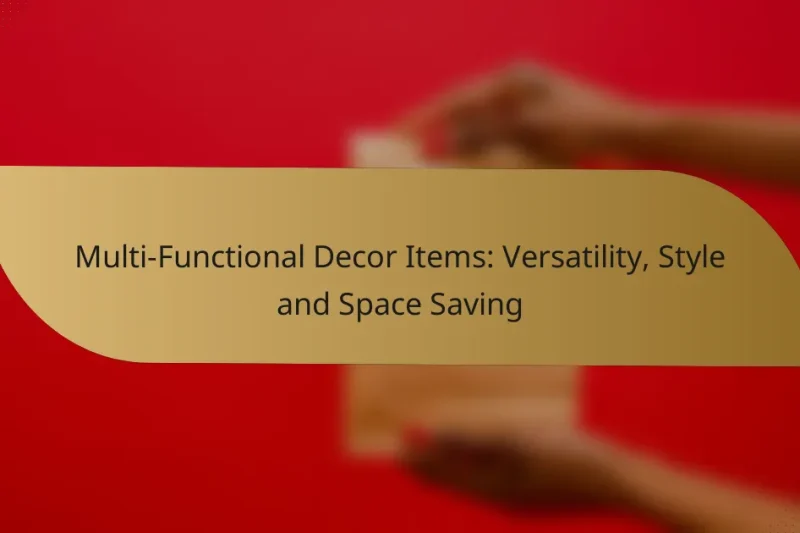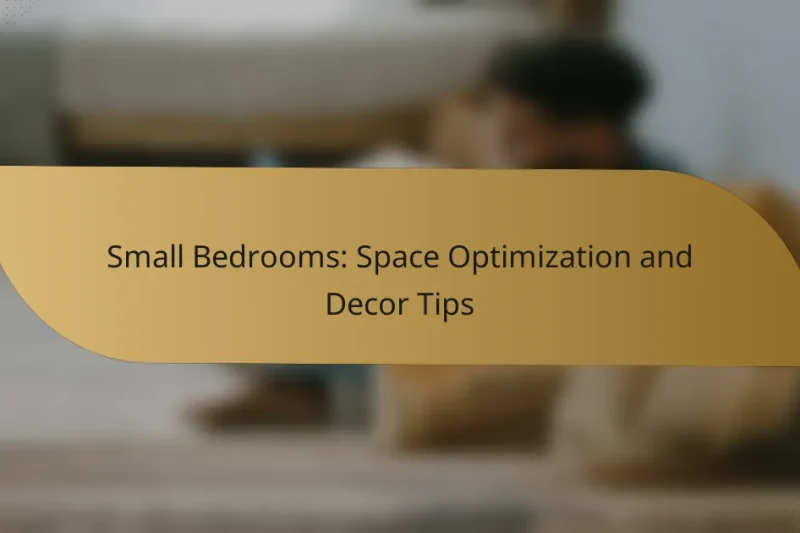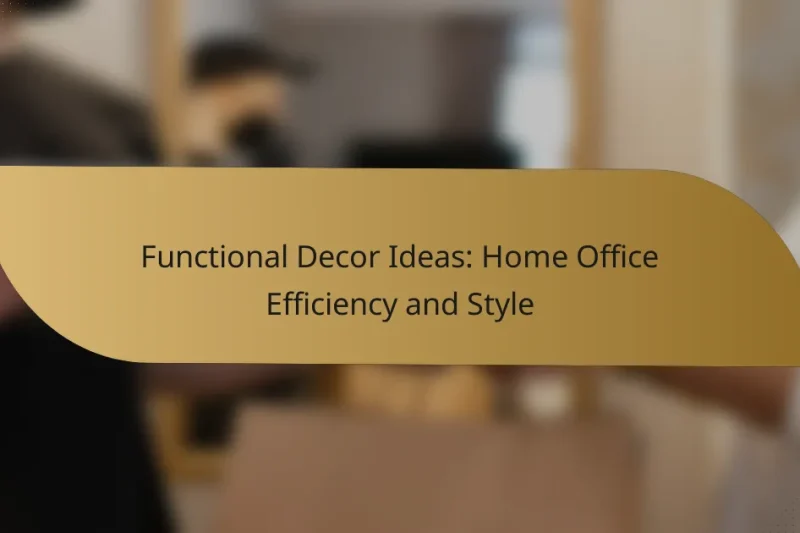Finding the right storage solutions for small spaces can transform your home into an organized and … Storage Solutions: Stylish Decor and Space MaximizationRead more
Functional Decor for Small Spaces
Functional decor is essential for maximizing small spaces, blending utility with style to create a harmonious living environment. By incorporating multi-functional furniture and vertical storage solutions, you can make the most of limited square footage while keeping your space organized and aesthetically pleasing.
Cozy Atmosphere: Comfort, Design and Small Living Areas
Creating a cozy atmosphere in small living areas is essential for transforming these spaces into welcoming … Cozy Atmosphere: Comfort, Design and Small Living AreasRead more
Mirrors: Illusion of Space and Design Enhancement
Mirrors are powerful tools in interior design, capable of transforming small spaces by creating an illusion … Mirrors: Illusion of Space and Design EnhancementRead more
Choosing Furniture: Small Living Room Essentials and Space Efficiency
Choosing the right furniture for a small living room is essential for maximizing space and creating … Choosing Furniture: Small Living Room Essentials and Space EfficiencyRead more
Multi-Functional Decor Items: Versatility, Style and Space Saving
Multi-functional decor items are vital for optimizing space in smaller living areas, seamlessly merging functionality with … Multi-Functional Decor Items: Versatility, Style and Space SavingRead more
Small Bedrooms: Space Optimization and Decor Tips
Small bedrooms can be both functional and stylish with the right space optimization and decor strategies. … Small Bedrooms: Space Optimization and Decor TipsRead more
Functional Decor Ideas: Home Office Efficiency and Style
Creating a functional decor in your home office can greatly enhance both efficiency and style, leading … Functional Decor Ideas: Home Office Efficiency and StyleRead more
How can functional decor maximize small spaces?
Functional decor maximizes small spaces by incorporating items that serve multiple purposes, enhancing both utility and aesthetics. This approach allows for efficient use of limited square footage while maintaining a stylish environment.
Multi-functional furniture
Multi-functional furniture is essential for small spaces, as it combines several uses into one piece. For example, a sofa bed can serve as both seating and a sleeping area, while an ottoman with storage can function as a coffee table and a place to store blankets or magazines.
When selecting multi-functional furniture, consider the size and scale relative to your space. Look for pieces that can easily adapt to different needs, such as a dining table that can expand for guests or a desk that can fold away when not in use.
Vertical storage solutions
Vertical storage solutions take advantage of wall space, which is often underutilized in small areas. Shelving units, wall-mounted cabinets, and hooks can help organize items without occupying valuable floor space. For instance, floating shelves can display books or decor while keeping the floor clear.
Incorporating vertical storage requires careful planning. Assess your wall space and choose solutions that complement your decor style. Use baskets or bins on shelves to keep items tidy and easily accessible.
Space-saving decor items
Space-saving decor items enhance the visual appeal of small spaces without overwhelming them. Look for lightweight, airy designs such as mirrors that create an illusion of depth or wall art that draws the eye upward.
Consider using decor that serves a dual purpose, like decorative boxes that can hold items while adding style. Avoid bulky items that can make a room feel cramped, and opt for pieces that are proportionate to the space available.
What are the best multi-functional furniture options?
The best multi-functional furniture options maximize utility while minimizing space. Key choices include sofa beds, storage ottomans, and expandable dining tables, each offering unique benefits for small living areas.
Sofa beds
Sofa beds serve as both seating and sleeping solutions, making them ideal for small spaces. When selecting a sofa bed, consider the mattress quality and ease of conversion; some models fold out easily while others may require more effort.
Look for designs that fit your decor and offer additional storage, such as compartments for bedding. Popular sizes range from twin to queen, accommodating different guest needs.
Storage ottomans
Storage ottomans provide versatile seating and hidden storage, perfect for stowing away blankets, books, or other items. Choose ottomans that are lightweight for easy movement and have a sturdy lid for seating support.
Consider options with removable tops or those that can double as coffee tables. Prices typically range from low tens to a few hundred dollars, depending on materials and design.
Expandable dining tables
Expandable dining tables allow you to adjust the size based on your needs, making them practical for small dining areas. Many models feature drop leaves or extendable sections that can accommodate additional guests when necessary.
When selecting a table, ensure it fits comfortably in your space when not expanded. Look for materials that are durable and easy to clean, with prices varying widely based on style and craftsmanship.
Which vertical storage solutions work best?
Vertical storage solutions maximize limited space by utilizing walls and overhead areas. Effective options include wall-mounted shelves, over-the-door organizers, and hanging planters, each offering unique benefits for small spaces.
Wall-mounted shelves
Wall-mounted shelves are versatile and can be installed at various heights to suit your storage needs. They are ideal for displaying books, plants, or decorative items while keeping the floor clear. Consider using floating shelves for a minimalist look or bracketed shelves for added strength.
When selecting wall-mounted shelves, ensure they are securely anchored to the wall to support the weight of the items you plan to store. A common guideline is to space shelves 12-18 inches apart, depending on what you want to display.
Over-the-door organizers
Over-the-door organizers are excellent for utilizing the back of doors, providing storage for shoes, accessories, or cleaning supplies. They come in various designs, from pockets to racks, and can easily be hung without permanent installation.
When choosing an over-the-door organizer, consider the door’s thickness and weight capacity. Look for options that are adjustable or have removable hooks to fit different door styles, ensuring they do not damage the door surface.
Hanging planters
Hanging planters add greenery to small spaces while saving floor area. They can be suspended from ceilings, walls, or even window frames, creating a vibrant atmosphere. Choose lightweight materials and consider self-watering options for easier maintenance.
When installing hanging planters, ensure they are securely fastened and can support the weight of the plants and soil. A good rule of thumb is to hang them at eye level or slightly above to enhance visibility and aesthetic appeal.
What are effective space-saving decor items?
Effective space-saving decor items maximize functionality while enhancing the aesthetic of small spaces. These items often serve dual purposes, allowing you to maintain style without sacrificing valuable square footage.
Mirrors for depth
Mirrors are a powerful tool in small spaces as they create an illusion of depth and openness. By strategically placing mirrors across from windows or light sources, you can reflect natural light, making the area feel brighter and more spacious.
Consider using large, framed mirrors or a collection of smaller ones to add visual interest. Ensure they are securely mounted to avoid accidents, especially in high-traffic areas.
Foldable wall art
Foldable wall art combines creativity with practicality, allowing you to change your decor without taking up permanent space. These pieces can be easily stowed away when not in use, making them ideal for small living areas.
Look for designs that can be folded flat or rolled up. This flexibility lets you switch up your decor seasonally or for special occasions without cluttering your space.
Compact lighting fixtures
Compact lighting fixtures, such as wall sconces or pendant lights, provide essential illumination without occupying floor space. Opt for designs that blend seamlessly with your decor while offering sufficient brightness for the area.
When selecting lighting, consider fixtures that allow for adjustable brightness or multiple settings. This versatility can enhance the ambiance of your small space, making it feel cozy or vibrant as needed.
How to choose decor for small spaces?
Choosing decor for small spaces involves selecting items that enhance functionality while maintaining a sense of openness. Focus on versatile pieces that serve multiple purposes and create a cohesive aesthetic without overwhelming the area.
Assessing room layout
Start by evaluating the room’s layout to determine how to best utilize the available space. Measure dimensions and consider the flow of movement; ensure that furniture placement allows for easy navigation. Visualize the arrangement to avoid clutter and maximize the use of corners and vertical space.
Use furniture that fits the scale of the room. For example, opt for a compact sofa instead of a large sectional, and consider wall-mounted shelves to draw the eye upward, creating an illusion of height. Sketching a floor plan can help visualize different configurations before making any purchases.
Prioritizing functionality
When decorating small spaces, prioritize items that offer functionality alongside style. Look for furniture that doubles as storage, such as ottomans with hidden compartments or coffee tables with shelves. This approach reduces clutter and keeps essentials within reach.
Consider multi-purpose decor, like a foldable dining table that can be tucked away when not in use or a bed with built-in drawers. Aim for a balance between aesthetics and practicality to ensure that each piece contributes to the overall usability of the space.
What are the latest trends in functional decor?
The latest trends in functional decor emphasize maximizing utility while maintaining aesthetic appeal, especially in small spaces. This includes multi-purpose furniture, smart storage solutions, and the use of eco-friendly materials that align with sustainable living practices.
Eco-friendly materials
Eco-friendly materials are increasingly popular in functional decor, as they contribute to sustainability without compromising style. Common options include bamboo, reclaimed wood, and recycled metals, which not only reduce environmental impact but also add character to small spaces.
When selecting eco-friendly materials, consider their durability and maintenance requirements. For instance, bamboo is known for its strength and resistance to moisture, making it ideal for furniture in compact living areas. Reclaimed wood offers a rustic charm, but may require more upkeep to prevent wear.
To incorporate eco-friendly materials effectively, look for furniture that combines style with functionality, such as a coffee table made from reclaimed wood that doubles as storage. Additionally, prioritize local sourcing to minimize transportation emissions and support community businesses.






